#günther stoll
Explore tagged Tumblr posts
Photo


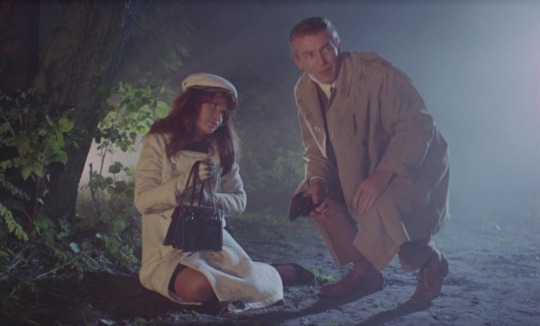







Der Bucklige von Soho | Alfred Vohrer | 1966
#Alfred Vohrer#Der Bucklige von Soho#1966#The Hunchback of Soho#Richard Haller#Karin Kenklies#Joachim Teege#Uta Levka#Günther Stoll#Gisela Uhlen#Pinkas Braun#Siegfried Schürenberg#Hilde Sessak#Suzanne Roquette
26 notes
·
View notes
Text
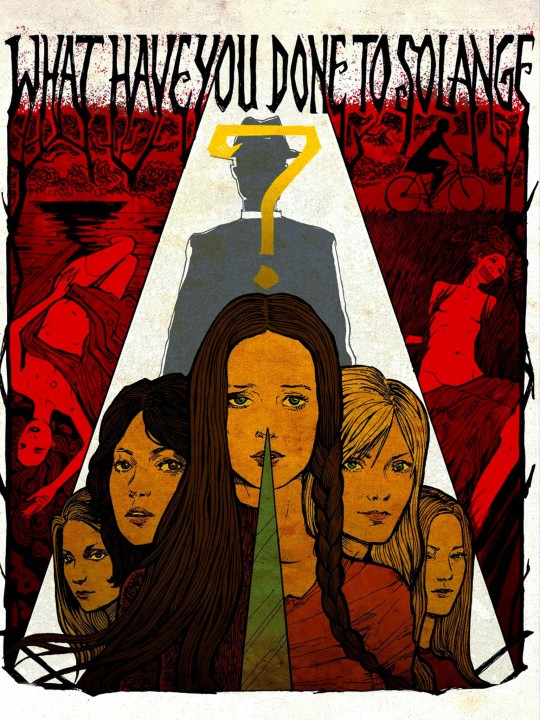
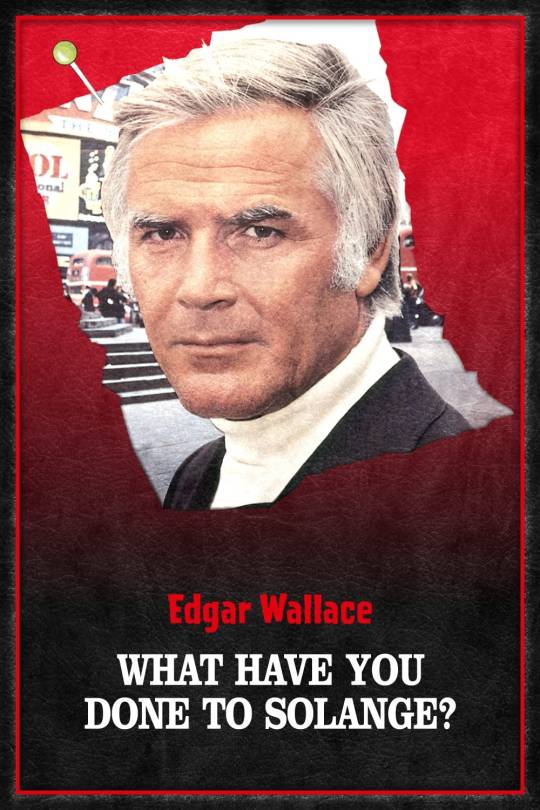
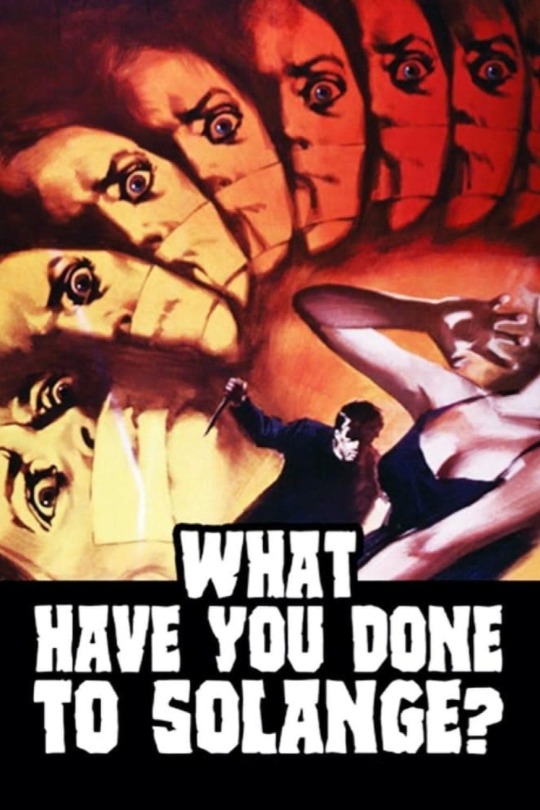

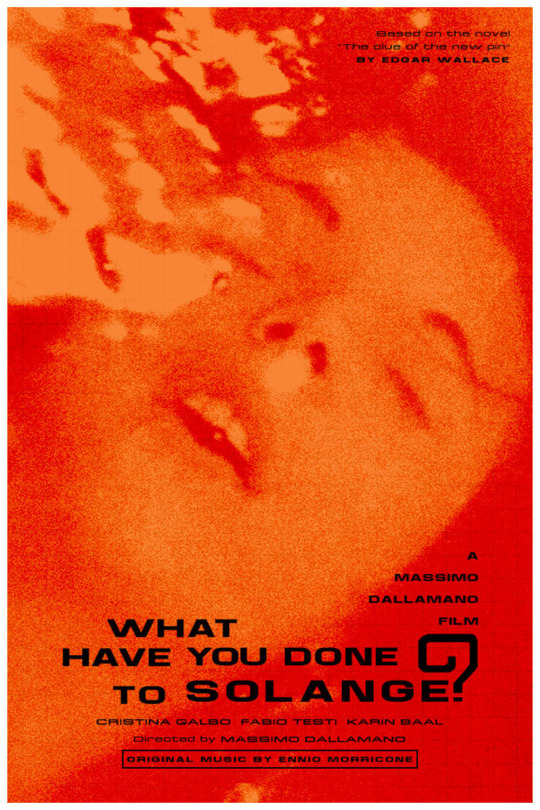
W A T C H I N G
#What Have You Done to Solange? (1972)#fabio testi#Karin Baal#Joachim Fuchsberger#Cristina Galbó#camille keaton#Günther Stoll#Claudia Butenuth#Massimo Dallamano#Cosa avete fatto a Solange?#watching#slasher#mystery#horror#Giallo film
0 notes
Text


CALIFICACIÓN PERSONAL: 4 / 10
Título Original: The Castle of Fu Manchu
Año: 1969
Duración: 92 min
País: Alemania del Oeste (RFA)
Dirección: Jesús Franco
Guion: Jaime Jesús Balcázar, Manfred Barthel, Michael Haller, Harry Alan Towers. Personajes: Sax Rohmer
Música: Carlos Camilleri, Malcomb Shelby
Fotografía: Manuel Merino
Reparto: Christopher Lee, Richard Greene, Howard Marion-Crawford, Günther Stoll, Rosalba Neri, Maria Perschy, José Manuel Martín, Werner Abrolat, Tsai Chin
Productora: Coproducción Alemania del Oeste (RFA)-Alemania-España-Italia-Reino Unido-Liechtenstein; Producciones Balcázar, International Cinema, Italian International Film, Terra Film, Tilma Films, Towers of London
Género: Adventure; Crime
TRAILER:
youtube
1 note
·
View note
Text
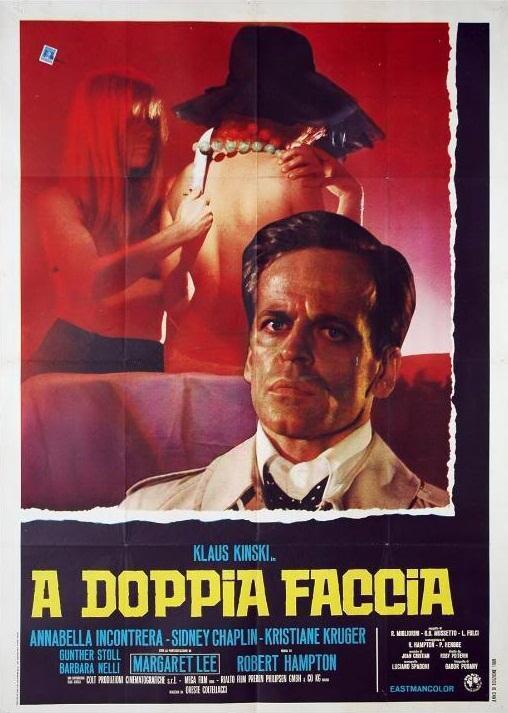

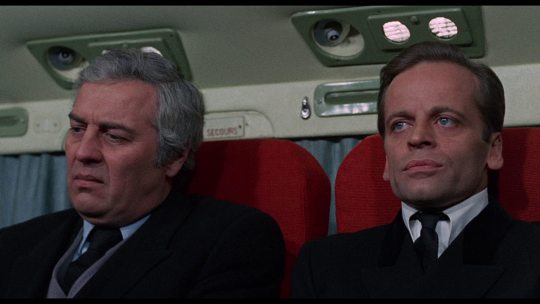
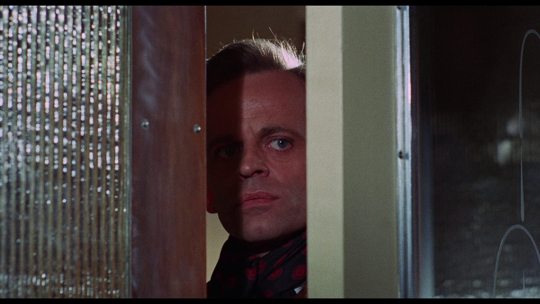
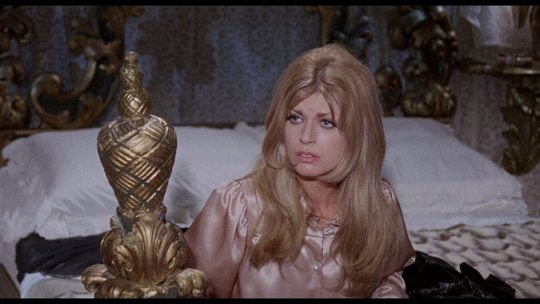



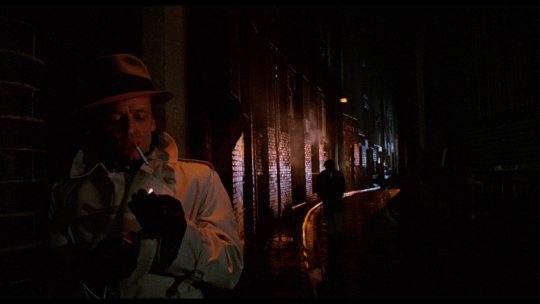
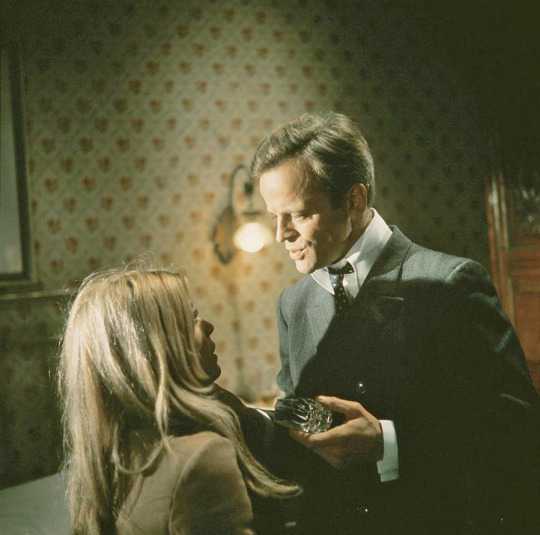
A doppia faccia (Double Face, 1969)
"Look, you need to tell me everything. I'm tired of all this reticence, insinuation and mystery! Tell me what you know."
#a doppia faccia#double face#Das Gesicht im Dunkeln#italian cinema#west german cinema#Riccardo Freda#Paul Hengge#klaus kinski#Christiane Krüger#Günther Stoll#annabella incontrera#sydney chaplin#Barbara Nelli#margaret lee#Carlo Marcolino#Luciano Spadoni#Ignazio Dolce#nora orlandi#edgar wallace#an Italian west german coproduction and loose adaptation of an Edgar Wallace property; one of a series made by the German Rialto Film#production company. director Freda (who had been responsible for I Vampiri a decade earlier‚ Italy's first sound horror film) worked from a#story initially set up by one of his successors‚ Lucio Fulci‚ tho a series of rewrites changed the film into something very different (and#bitterly disliked by Fulci). Freda was also responsible for getting Kinski onboard‚ tho this didn't translate into a good working#relationship: the two hated one another and Freda dubbed the notoriously difficult Kinski as the Crown Prince of Assholes#anyway. this is a minor giallo krimi blend with some outrageously cheap production elements and dismal special fx‚ but the plot (despite#the numerous rewrites) is actually kind of solid. the connection to Wallace is p much entirely manufactured but that's ok#it's kind of in keeping with the man's legacy; most Wallace adaptations post 1960 are in name only potboilers and this is really no#different (excepting the Italian connection).
10 notes
·
View notes
Photo

The weird case of Günther Stoll
The year is 1984, and Günther Stoll is an unemployed food engineer. His financial situation is precarious enough, but a far larger shadow looms over his life: a troubling case of clinical paranoia, and a creeping belief that he’s being targeted by a sinister presence.
Every now and then, Stoll mentions his fears of ‘them’ to his concerned wife. There’s no greater description of the shadowy figures. Whoever ‘they’ are, Stoll is certain they intend him harm.
On the evening of October 25, Stoll is at home, in his bedroom, cozy in a chair. Then, without warning, he jumps up and shouts, “Jetzt geht mir ein Licht auf!” (“Now I get it!”). Stoll grabs a pen and paper and scribbles down the phrase, ‘YOGTZE’ or ‘YO6TZE’—investigators are split over whether the ‘G’ is in fact a number ‘6.’ Seconds later, Stoll crosses out his mysterious message and abruptly leaves.
It’s late, but Stoll needs a drink. He climbs into his Volkswagen Golf and heads to the town of Wilnsdorf, where he orders a beer at his favorite pub. Before he can drink it, however, Stoll collapses to the floor, injuring his face. Witnesses are surprised by the tumble, as Stoll doesn’t appear drunk or tipsy; he may not have even touched his drink.
This episode occurs around 11pm, but the night is far from over. After regaining consciousness, Stoll leaves the bar, and for the next two hours his whereabouts are a mystery. At 1am he drives to his childhood hometown of Haigerseelbach, about 10km down the road from Wilnsdorf. There, Stoll seeks out a woman from his youth. She’s put off by the late-night visit and doesn’t let Stoll inside, but endures a monologue where he warns of a coming “horrible incident.” The woman hears her childhood companion out, and tells him to go home to his wife.
Stoll fails to follow her advice. Instead, he vanishes for another two hours. Then, at three in the morning, two truck drivers spot a wrecked VW Golf off the Autobahn A 45. Inside is Stoll, naked and bloodied, slumped in the passenger seat and barely conscious.
As one trucker calls for help, Stoll explains that he had travelling been with four strangers who “beat him loose” and abandoned him in his car. An ambulance arrives, and rushes the bloodied Stoll to the hospital—but he succumbs to his injuries en route. In separate lines of questioning, the truck drivers tell police they saw an injured man in a white jacket fleeing the wreck when they pulled up.
It’s a detail that complicates an already baffling discovery made by the police: Stoll wasn’t killed in the car wreck at which he was found. Instead, he had been run down at a different location, and then moved into his vehicle to die.
92 notes
·
View notes
Photo



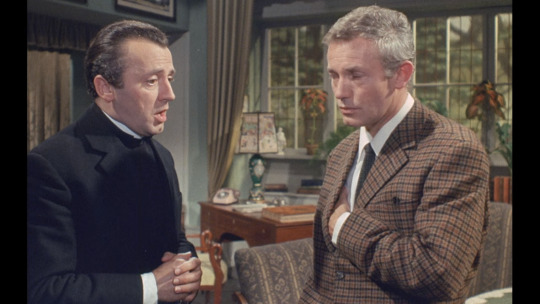
youtube
The Hunchback of Soho (1966)
My rating: 3/10
Ich weiß nicht, aber Zwangsprostitution und institutionelle Gewalt passen, finde ich, nicht so recht zum eher leichten Ton und Big-Band-Gebläse eines durchschnittlichen Edgar-Wallace-Films.
I don't know, but I don't think sex slavery and institutional violence are a very good fit for the rather light tone and brassy big band sound of your average Edgar Wallace movie.
1 note
·
View note
Link
This was another movie that I watched thanks to Duncan and the TPUTS Collective show of Where to Begin with Giallo. This is an interesting giallo film that is mean spirited at the heart. It has some sleaze that I enjoy in this movie and we also get an Ennio Morricone score. This is a good giallo, but if you seen this one, what did you think?
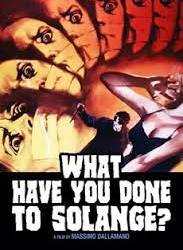
#what have you done to solange?#massimo dallamano#bruno di geronimo#fabio testi#karin baal#cristina galbo#giallo#ennio morricone#mystery#thriller#italy#west germany#united kingdom#camille keaton#joachim fuchsberger#gunther stoll#Cosa avete fatto a Solange?#Cristina Galbó#Günther Stoll#horror#horror film#horror films#horror movie#horror movies#horror fan#horror fans#horror review#horror reviews#horror reviewer#film review
0 notes
Text
Günther Stoll and the “YOG'TZE” incident

Günther Stoll was a food engineer in Germany who, in 1984, went through a bout of extreme acute paranoia. He talked constantly to his wife about people who were after him, only referring to his aggressors as “they.” His wife never believed that anyone was coming after him.
On the night of October 24th, 1984, at approximately 11 p.m, Stoll suddenly stood out of his armchair and yelled “Jetzt geht mir ein Licht auf!" This roughly translates to “Now I’ve got it!” or “Now I understand!” He then grabbed a piece of paper and pen and wrote down the phrase “YOG’TZE” then immediately scribbled it out. Before his wife could ask what the note meant, he left.
Shortly after, he was seen at his favorite bar in Wilnsdorf. Witnesses report that he ordered a beer and then stumbled out of his chair, injuring his face on the ground. He then left without eating or drinking anything. The bartender stated that he was not drunk at all, but did seem agitated and distracted.
His whereabouts are unknown until 1 a.m. when he showed up at a friend’s door, allegedly confused and manic. The friend was an older woman he had known since childhood and with whom he wanted to discuss religion. He warned her of a “terrible accident” that was to occur that night. She stated that since it was so late at night and he seemed so distressed that he go to his parent’s house and discuss it with them. He then left.
His whereabouts are once again unknown until approximately 3 a.m. when two truck drivers report a car crashed in a ditch off of the highway. Once law enforcement arrived, they found Stoll naked, barely alive, in the passenger seat of his car. One truck driver testified that Stoll had told him there were four other passengers in the car with him, but Stoll also stated he did not know who they were. Stoll perished on the way to the hospital.
As law enforcement began investigating his death, they discovered that Stoll’s injuries were consistent with being hit by a car, but not his car. They theorized that someone must have run Stoll over with a different car, then put him in the passenger seat of his own car and drove into the ditch. The truck drivers also testified that they both saw a man in a brightly colored jacket leave the scene before law enforcement arrived. That person has never been identified.
The meaning of the scribbled “YOG’TZE” remains unknown to this day. There are many theories, including it’s an anagram for zygote, or that the “G” is actually meant to be a “6” and is the license plate, meaning Stoll had somehow known he was going to be hit by a car that night. There is also a Romanian radio station with the callsign YO6TZE, however, no connection to Stoll has ever been made.
The German authorities classified Stoll’s death as a murder, but it remains unsolved.
#true crime#true crime unsolved#true crime research#buzzfeed unsolved true crime#buzzfeed unsolved#unsolved murder#unsolved#conspiracy#conspiracy theories#mysterious#unsolved mystery#unsolved mysteries#true crime blog#true crime community#tcc#unsolved true crime
59 notes
·
View notes
Photo

Double Face will be released on Blu-ray on June 25 via Arrow Video. Graham Humphreys designed the new cover art, while the original poster will be on the reverse side.
The 1969 Italian giallo is directed by Riccardo Freda (One on Top of the Other), who co-wrote the script with Paul Hengge (Seven Blood-Stained Orchids). Lucio Fulci (Zombie) receives a story credit. Klaus Kinski, Christiane Krüger, Günther Stoll, Annabella Incontrera, and Margaret Lee star.
The original Italian version of Double Face has been restored in 2K from the original 35mm camera negative. It features original English and Italian (with English subtitles) audio, titles, and credits. Special features are below.
Special features:
Audio commentary by author and critic Tim Lucas (new)
Interview with composer Nora Orlandi (new)
The Many Faces of Nora Orlandi - Video appreciation of composer Nora Orlandi by musician Lovely Jon (new)
The Terrifying Dr. Freda - Video essay on Riccardo Freda’s gialli by author and critic Amy Simmons (new)
Extensive image gallery
Italian theatrical trailer
English theatrical trailer
When wealthy businessman John Alexander (Klaus Kinski)’s unfaithful wife Helen (Margaret Lee) dies in a car crash, it initially looks like a freak accident. However, the plot thickens when evidence arises suggesting that the car was tampered with prior to the crash. And John’s entire perception of reality is thrown into doubt when he discovers a recently-shot pornographic movie which appears to feature Helen – suggesting that she is in fact alive and playing an elaborate mind game on him…
#double face#giallo#klaus kinski#graham humphreys#lucio fulci#arrow video#dvd#gift#italian horror#riccardo freda#margaret lee#60s horror#1980s horror#gialli#nora orlandi
9 notes
·
View notes
Photo


One of Germany’s greatest unsolved murder mysteries is the bizarre case of Günther Stoll, a case otherwise known as YOGTZE-Fall.
Stoll was an ordinary, unemployed food technician from Anzhausen in Germany. Well, maybe he was a little paranoid. He believed he was being stalked, and often talked about “them,” telling his wife that eventually “they” were going to kill him. But no one ever knew who “they” were. As the story goes, on the evening of October 25, 1984, while sitting quietly in his bedroom, Stoll unexpectedly jumped out of his chair and exclaimed, “I’ve got it!”
His wife watched, confused, as Stoll grabbed a piece of paper and scribbled down six letters: YOGTZE. The “G” may have been a “6,” but he immediately crossed the letters out, anyway.
Afterwards, he left the house. He jumped into his Volkswagen Golf. Fast forward about hours later, around 3:00 a.m. Two truck drivers discovered Stoll’s Volkswagen in a ditch off Autobahn A 45. It was wrecked. They pulled over to assist and notified the police using a nearby emergency telephone. What they found at the scene was Günther Stoll, still in his car, completely naked and barely conscious. Stoll died before reaching the hospital.
An investigation into his death revealed that Günther Stoll had not died from the car accident. Instead, he had been run over by a different car at another location. Whoever did this had run Stoll over with a separate vehicle, then put him back into the passenger side of his Volkswagen and drove it into the ditch where the truck drivers had found it.
To this day, no one knows the location where Stoll had been run over by the other vehicle, or what the cryptic letters YOGTZE mean. (Source) @sixpenceee
6K notes
·
View notes
Photo

Der Bucklige von Soho | Alfred Vohrer | 1966
Uta Levka, Günther Stoll
9 notes
·
View notes
Link
Genre: Crime, Horror, Thriller
Language: German (Eng-Sub)
IMDb Ratings: 6.0/10
Quality: 1080p Bluray
Movie Size: 1.71GB
Director: Alfred Vohrer
Movie Cast: Günther Stoll, Pinkas Braun, Monika Peitsch
Sypnosis: A woman is kidnapped and her identity is stolen by criminals attempting to collect her inheritance.
0 notes
Text






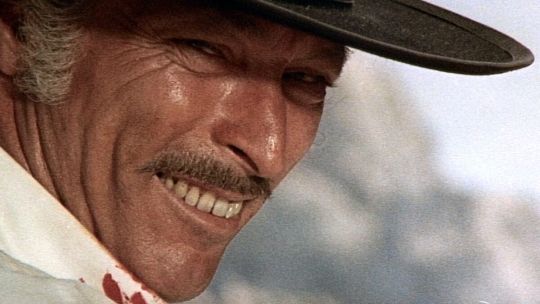

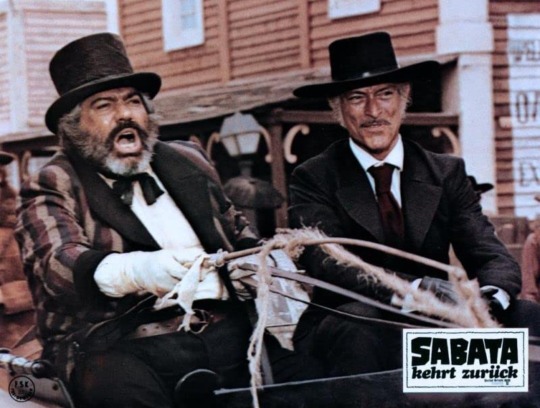

È tornato Sabata... hai chiuso un'altra volta! (Return of Sabata, 1971)
"They tell me you're a good gambler."
"I'm always looking for the odds."
"You can cheat at gambling, but... for this? Why risk your life?"
"That's right. Why should you risk yours, McIntock?"
#È tornato Sabata... hai chiuso un'altra volta!#return of sabata#italian cinema#spaghetti western#1971#gianfranco parolini#Renato Izzo#lee van cleef#Reiner Schöne#Giampiero Albertini#Ignazio Spalla#annabella incontrera#Jacqueline Alexandre#Vassili Karis#Aldo Canti#Gianni Rizzo#Steffen Zacharias#Pia Giancaro#John Bartha#Günther Stoll#Carmelo Reale#franco fantasia#Marcello Giombini#in 1978 Harry Medved included this in his book The 50 Worst Films of all Time. which says more about the limited film viewing of Mr Medved#than it does about this film; I'm really quite lost as to what irked him so much because this is no worse (nor any better) than the other#2 Sabata films. they all follow a pretty close formula of Lee teaming up with an old friend slash treacherous rival‚ finding some acrobats#and befriending Ignazio Spalla‚ inventively killing a small army of nameless gunmen and then riding away with a small fortune. i mean they#are what they are: devoid of the politics and allegory that made the best spaghetti westerns‚ but packed with enough gunplay and explosions#to satisfy even the most jaded viewer. they're a good time! fun dumb westerns in which Van Cleef's near immortal shootist defies everything#including physics logic good sense and god‚ to make some money and kill some bad guys. it ain't art so why complain?
18 notes
·
View notes
Photo

The YOG’TZE case
On Thursday, October 25th 1984, between 8 and 9 pm, Günther has diner with his wife. During the meal he mentions that everybody is against him and that “they” want to do him harm. He cannot or does not want to elaborate who “they” are.
Shortly before 11 pm he exclaims that, now he begins to see (“Nun geht mir ein Licht auf!”). He writes the (in-)famous six characters YOG’TZE (or YO6’TZE,) on a sheet of paper and immediately crosses them out again. He leaves the sheet of paper behind and tells his wife that he will go to the pub to have a beer.
Only a few minutes later he arrives in the pub “Papillion” in the neighboring village Wilnsdorf, which is only around 5 km away from his home. He is an occasional customer and known by the people present. He orders a beer. Before the beer is served, he loses consciousness for a moment and falls from his chair. He suffers a small injury in the face but is back up almost instantly. When asked, if he is drunk, he says that he had not any alcohol. He leaves the pub without touching his beer and drives away in his car.
About two hours later, around 1 am he rings the bell of Erna Helfitz (this seems to by a pseudonym made up by police to protect the identity of the real person), an old woman in Haigerseelbach, the village where he was raised and his mother and his sibling are still living. Haigerseelbach is only 10 km from the pub and it is unknown what he did in the two hours between the two sightings. He knows the woman from his childhood and she only lives a couple of houses away from his mother. As it is in the middle of the night Erna only opens a first-floor window and talks with Günther from there. He wants to come in and discuss something with her and predicts that “something terrible will happen this night”. She declines because it is in the middle of the night. She suggests that he should go to his mother if he has problems. He answers that she will not understand. Erna then suggests that he drives home to his wife to which he agrees and leaves.
We again skip two hours and move 100 km north on the highway A45. The truck driver Holger Meffert is driving his truck from Frankfurt to Dortmund. Shortly before the exit “Hagen-Süd” he notices a blue VW Golf in the trench beside the highway. He also sees a man in light colored clothing outside of the car. He seems to be injured and bleeding on his right arm. He stops to render assistance. As he first has to slow down, he stops around 200 meters after the crashed car. As he happens to be near an emergency call box, he calls for help before going back to the crash.
In the meantime, a second truck driver, Georg Konzler, also notices the crash and stops. He will later state that he also saw an injured man outside of the car.
When they arrive at the crashed Golf, they cannot find the person they have seen walking around the car. But they find the naked and seriously injured (almost amputated arm, etc.) Günther Stoll in the passenger seat of his own car. When they ask him, where the other person went, he answers that there were four men in the car and that the men were not his friends. After that he loses consciousness and he died on the way to the hospital.
An autopsy showed that Günther was injured by being driven over with a car. Not his own car, but another one. Also, it was determined that this did not happen at the same place where he and his car were finally found. The strangest thing the autopsy found: he was already naked when he was driven over. Blood analysis showed that he had no blood alcohol and was not under the influence of drugs.
21 notes
·
View notes
Text
YOGTZE case
The YOGTZE-Fall (German for YOGTZE-case, also BAB-Rätsel, Autobahn-Riddle) refers to the death of unemployed German food engineer Günther Stoll, which occurred on 26 October 1984. It is one of the most mysterious unsolved cases in German criminal history. On 12 April 1985, the case was presented on the popular German television program Aktenzeichen XY … ungelöst. More details Android, Windows
0 notes
Photo

16. April 2017
Heute gesehen: Maigret und sein größter Fall, Spielfilm, Österreich / Frankreich / Italien, 1966. Erstaufführung: 24.11.1966 (BRD), Verleih: Constantin, FSK 16, Laufzeit: 89:33 Min., Bild: Farbe (Kodacolor), Bildformat: 1,85:1 (laut IMDB), 1,33:1 (laut Filmportal). Produktion: Carmina Films, Constantin Film, Intercontinental, Terra Film. Drehbuch: Herbert Reinecker, frei nach einer Vorlage von Georges Simenon. Musik: Erwin Halletz. Kamera: Heinz Hölscher. Regie: Alfred Weidenmann. Darsteller: Heinz Rühmann, Françoise Prévost, Günther Stoll u.a. IMDB-Bewertung: 5.8/10
Handlung
Bei einem Einbruch in einem Museum wird ein wertvolles Gemälde von Vincent van Gogh gestolen. Im Handgemenge mit dem Einbrecher stürzt ein Wächter eine Treppe hinunter und bleibt tot liegen. Kommissar Maigret (Heinz Rühmann) beginnt zu ermitteln. Ein Galerist namens Holoway (Günther Ungeheuer) meldet sich bei der Polizei, ihm sei das Gemälde angeboten worden. Darauf läßt ihn Maigret überwachen. Als Holoway eilig nach Lausanne aufbricht, folgt ihm Maigret. Holoway trifft sich dort mit einem Musiker (Günther Stoll), der in einer Bar arbeitet und etwas zu wissen scheint. Doch jetzt verkompliziert sich alles. Zwei junge Männer (Ulli Lommel und Edwin Noel), die in der Bar verkehren und mit der Bardame Simone (Françoise Prévost) gut bekannt sind (einer von beiden, René Delfosse, ist ihr Liebhaber), versuchen nach Ladenschluß in der Bar einzubrechen und finden unterwarteterweise Holoway - scheinbar - tot am Boden liegen. Sie fliehen. Später im Hotel findet Maigret den nun tatsächlich toten Holoway erschlagen in seinem Zimmer. Um den Täter in Verwirrung zu stürzen, verstecken Maigret und Inspektor Caselle (Gerd Vespermann) den Leichnam in einem Wäschekorb und legen ihn in einem Park ab. Nun geraten die Dinge wirklich in Bewegung. Am Schluß haben wir zwei verschiedene Mörder: der Täter im Pariser Museum und den Mörder von Holoway.
Darsteller:
Heinz Rühmann: Kommissar Maigret
Françoise Prévost: Simone, Bardame
Günther Stoll (als Günter Stoll): Alain Robin
Günter Strack: Kommissar Delvigne
Gerd Vespermann: Inspektor Caselle
Eddi Arent: François Labas, Versicherungsdetektiv
Günther Ungeheuer: Mr. Holoway, Kunstsammler
Alexander Kerst: André Delfosse
Ulli Lommel: René Delfosse
Edwin Noel: Jean
Christo Neggas: Adriano Genaro u.a.
Orte der Handlung: Paris und Lausanne, wo auch Außenaufnahmen gemacht wurden. Die Studioszenen hat man in Wien aufgenommen.
Fazit
Drehbuchautor Herbert Reinecker hat sich hier des Romans Maigret und der Spion (Originaltitel: La danseuse du Gai-Moulin, Erstveröffentlichung: 1932) bedient und sehr frei umgestaltet. Der titelgebende Spion der deutschen Übersetzung ist dabei völlig unter den Tisch gefallen. Hinzugefügt wurde statt dessen als komischer „sidekick“ Eddi Arent in der Rolle des Versicherungsdetektivs Labas. Ich vermute, das haben wir der an der Produktion beteiligten Constantin Film zu verdanken, die nach dem Erfolg Arents in den Wallace-Verfilmungen unbedingt das Klischee einer komischen Nebenfigur haben wollten. Die Rolle des Versicherungsdetektivs ist aber völlig überflüssig und zu allem Überfluß spricht Arent sich nicht selbst, sondern tönt in einer fremden Synchronstimme, was dann weniger erheiternd als befremdlich klingt.
Viele Kritiker haderten mit der Besetzung Rühmanns in der Titelrolle des Kommissar Maigret. Mir hingegen gefällt seine Interpretation der Figur. Was ihm im Vergleich zu Jean Gabin oder Rupert Davis an physischer Statur und breitbeinigem Auftreten abgeht, macht er durch eine unterkühlte Art und ein zielgerichtetes Vorangehen wieder wett. Seit seinem Auftritt in Es geschah am hellichten Tag (1958) wußte man, daß ihm auch solche Rollen lagen.
Daß sich der Film nicht aus dem Mittelmaß erhebt, liegt in meinen Augen nicht an Rühmann oder den anderen Darstellern, die routiniert und professionell agieren.


(Françoise Prévost, 1953)
Françoise Prévost hatte ich schon einmal in einer Rolle als Bardame gesehen: In der Episode International Spies der amerikanischen Fernsehserie Foreign Intrigue (1953) trat sie als Barsängerin und Gangsterliebchen auf (siehe 8. November 2016).
Dialog-Fragment
Museumsdirektor (zum pfeiferauchenden Maigret): Üblicherweise raucht man hier nicht!
Maigret: Üblicherweise geschehen hier auch keine Morde ...
Heimkino-Veröffentlichungen
Mittlerweile gibt es zwei DVD-Veröffentlichungen des Films. 2010 erschien eine Ausgabe bei 3L Film in der Reihe Klassiker der Moderne (EAN: 4049834003388). Jüngst legte Pidax erneut eine Veröffentlichung vor (erschienen im April 2017, EAN: 4260497420194; siehe Pidax). Bei den DVD-Ausgaben wurde die ursprüngliche FSK-Bewertung von 16 auf 6 heruntergestuft.
Mir lag die Aufzeichnung einer Fernsehausstrahlung auf ORF2 vor, die am 15.04.2017 gesendet wurde. Laufzeit: 84:50 Min., Bildseitenformat: 1,78:1.
Quellen: [IMDB]; [OFDB]; [Filmdienst]; [Wikipedia (de)]; [Filmportal]
0 notes